Andros, Greek Cyclades Islands
Andros – off the beaten track of the Greek Cyclades islands
By Chantal Cooke
If you’re looking for a holiday where you can party at night and recover on the beach during the day – the island of Andros in the Greek Cyclades will probably not be your first choice. But if you are looking for a quieter time, access to nature, great hiking trails, fascinating history and fabulous views, then Andros is the perfect destination.
It is the second largest of the Cyclades Islands and forms the northern point of the archipelago. With lush forests, hillsides covered in flowers, and freshwater springs popping up all over the place, the island is easily distinguishable from its neighbours.
You can reach the island by ferry from either Athens or Mykonos. The ferries from Athens are faster (a shorter distance) and cross more often, but the two-hour trip from Mykonos, via Fast Ferries, is very pleasant and allows you to see, from a distance, some of the other islands.
I’d suggest visiting Andros anytime between mid-May and end of June. The island is open for business but not crowded. (July and August can be very busy and best avoided if possible). The temperatures are warm, but the breezes keep the sweat at bay. And the hillsides are covered in flowers. The riot of colour will take your breath away: bright yellow broom, oleanders varying from white to deep pink, purple topped thistles, lacy white wild carrots and the deep reds and purples of bougainvillea contrast with pale lilac mallow, red poppies and yellow eyed daisies. The air is thick with the scent of thyme, rosemary and jasmine.
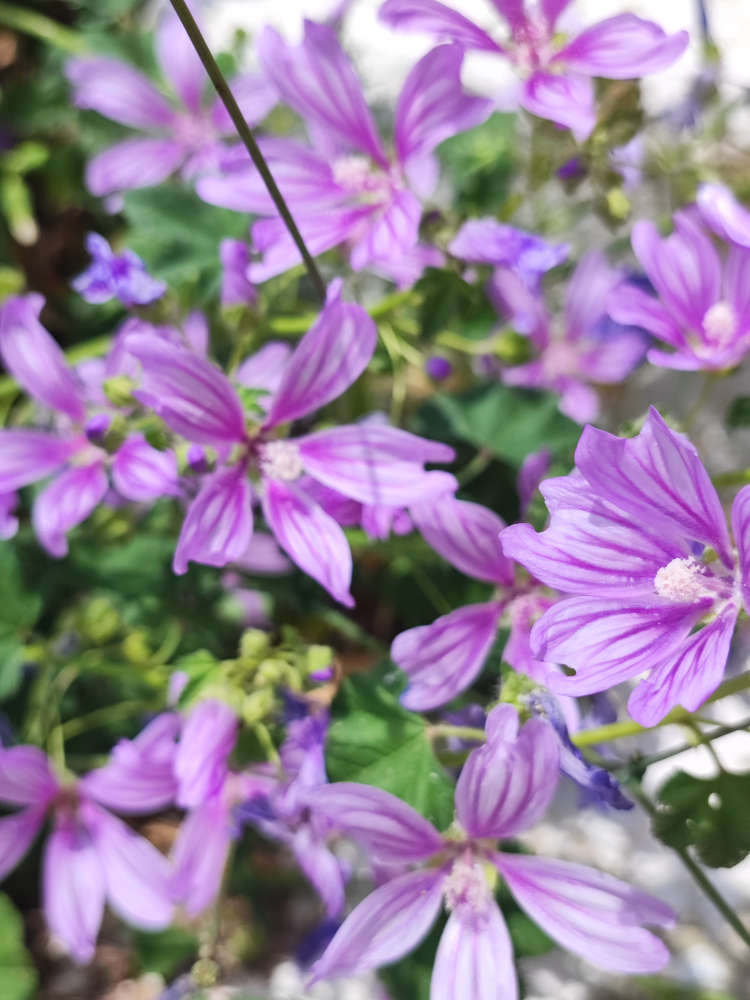
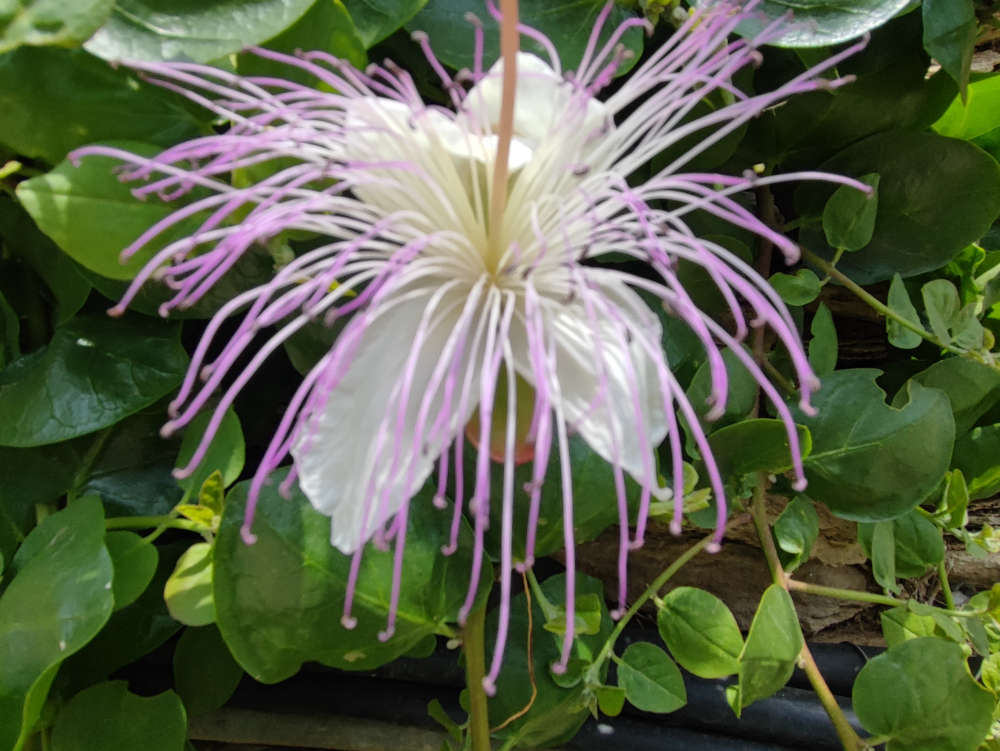
Underground springs and gurgling rivers have helped irrigate Andros for millennia, turning it into a fertile land of lemons, oranges, and apricots. There are vineyards and small vegetable patches carved onto the hillside on narrow terraces supported by stone walls. Carefully cut channels direct the water where it is needed, with a simple system of stones used to block one area and redirect to another.
The freshwater springs dotted around the island have helped shape its human history. Monasteries and villages have sprung up around this access to water, so almost wherever you stop you’ll be able to fill up your water bottle with a sweet tasting liquid that is a far cry from the urban water we are often used to.
With so many rivers, there are also waterfalls. Pythara Waterfall is easy to reach with a gentle walk along a stone path dotted with cypress, olive, fig and walnut trees. The waterfall is picture-perfect, surrounded by lush foliage, tiny wildflowers and sun-sparkled water. This is one of the easiest to reach so does tend to attract a few people. Other waterfalls are quieter, requiring more of a hike. Some can only be reached by boat, so you’re likely to have the place to yourself.
Hiking is an excellent way to explore the island. Routes will take you along the rocky coastline and onto sandy beaches, through tiny villages where the streets are so narrow the only means of transporting large items is via donkey, past ruined castles and abandoned villages, and onto the tops of the hills where the views across the Aegean will get you reaching for you camera.
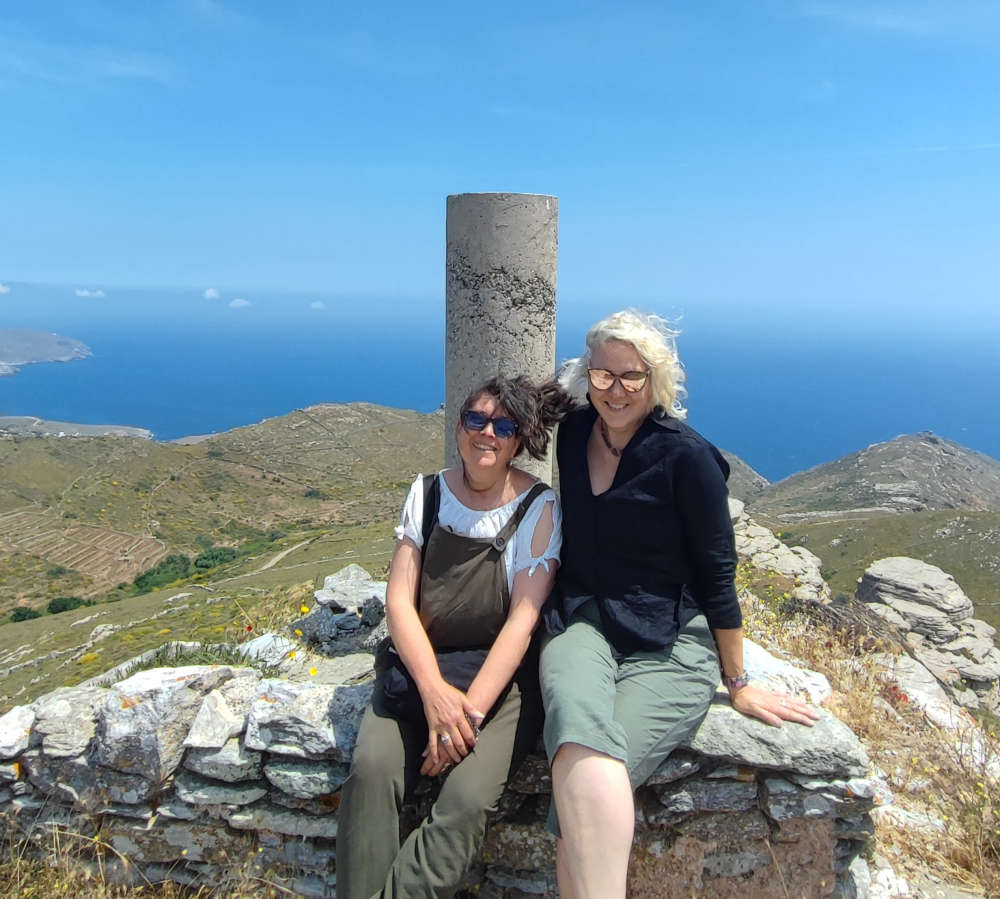
The island is LGBTQ+-friendly but unlike some of the more popular islands of the Cyclades, there are no specific places that are built for a queer clientele. Some of the staff at the Micra Anglia Hotel, for example, are gay and this certainly makes it a good choice, but it is not the only place where you’ll feel welcome and comfortable.
If beaches are your thing, then Christos, from the Micra Anglia suggests Lydi Beach, one of his favourite haunts. Many of the island’s LGBTQ+ residents gather there, especially on the days when nudism is permitted.
To add a bit of history to your trip, head out to one of the Monasteries. The Santa Marina Monastery was built in 1325 CE but has been added to many times since. Inside you can see the ornate chapel with so much gold and silver that the light from the tiny windows bouncing off the metal is enough to illuminate the room. At Panachrantou, the oldest Monastery on the island, built in 960CE and clinging to the rock walls of the hillside behind, descend past the goldfish pond to the terrace then enter via the arches to see the ancient well. At both Monasteries expect a welcoming offer of a very sweet treat called Loukoumi, flavoured with rose, bergamot or lemon.
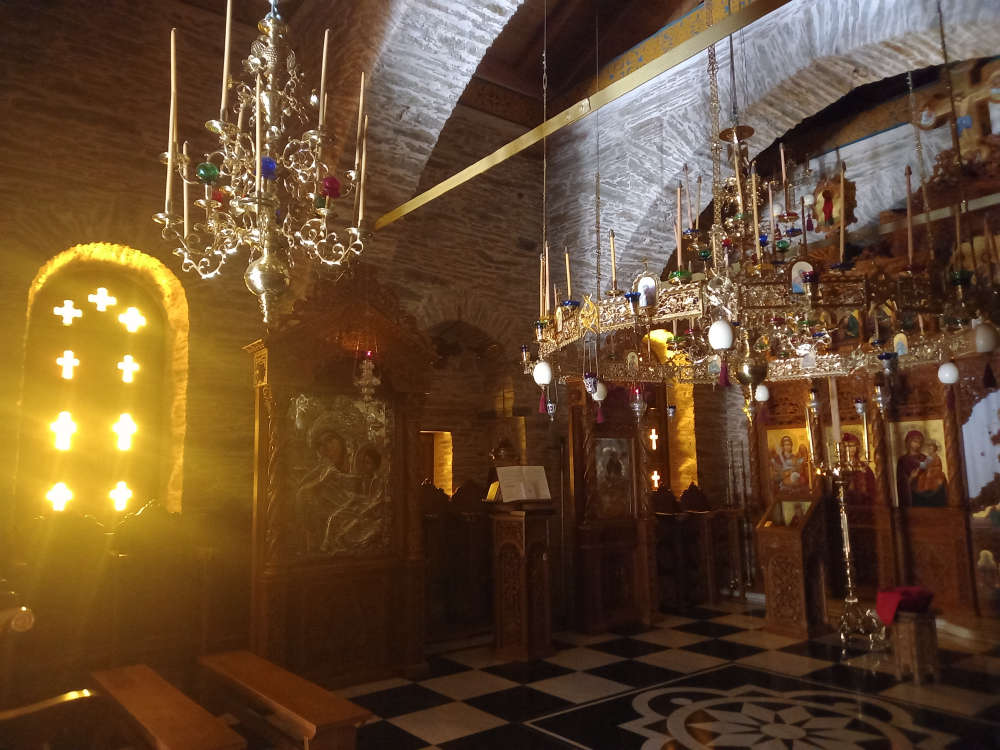
There are four main towns on the island and although the ferry drops you at Gavrio, I’d suggest staying elsewhere. Towns like Batsi and Chora will give you a better feel for the island and allow you to get off the ‘beaten track’ – not that any track in Andros is that beaten, which is part of its allure.
We stayed at the Micra Anglia Boutique Hotel in Chora. It has a certain old-world elegance, with airy rooms, many with views of the sea and the hills beyond. Breakfast is served by the pool and Christos, who oversees the morning team, conjured up fabulous vegan treats for me to eat each day. The restaurant, Dolly’s, (within the Micra Anglia) has a traditional Greek menu, is open to non-residents in the evening.
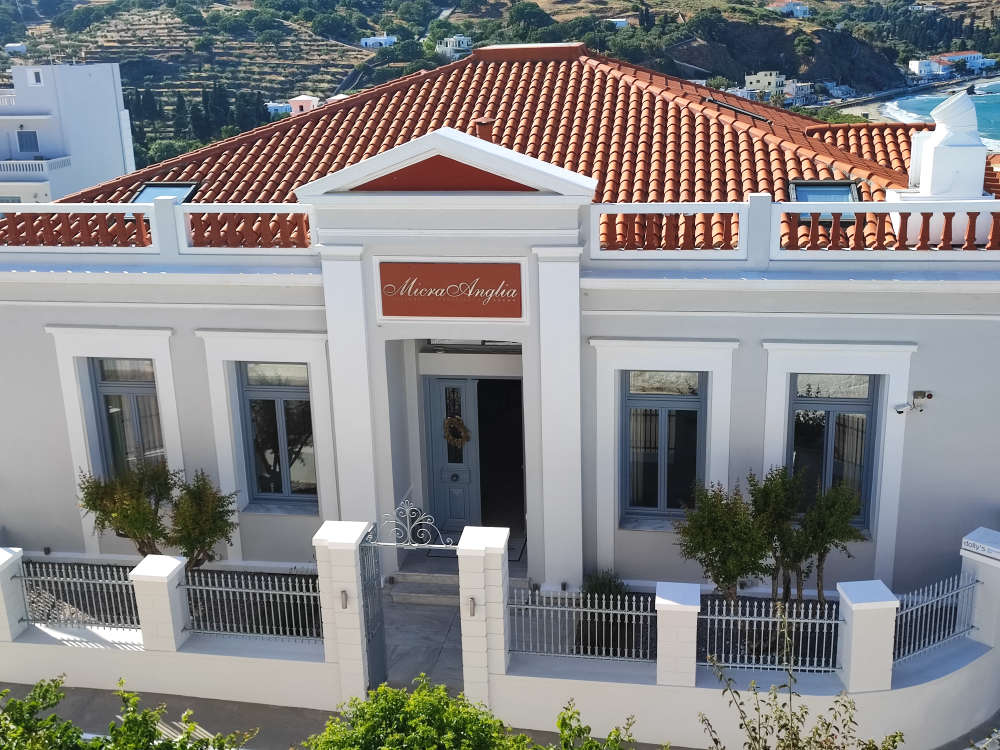
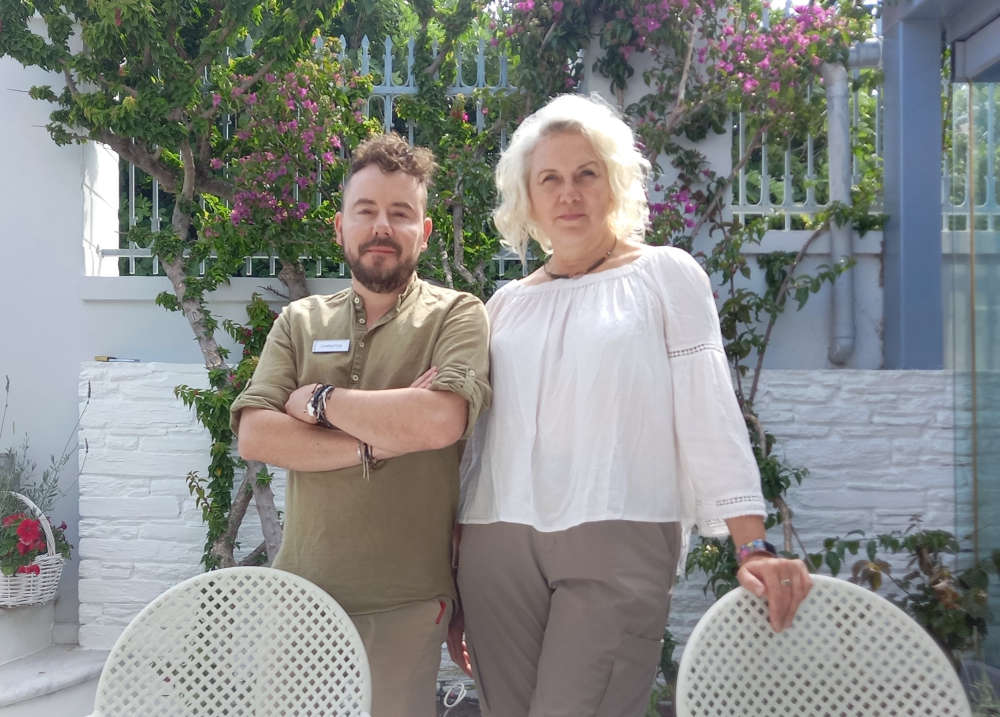
Chora sits on a thin peninsula pointing out towards the Tourlitis Lighthouse which balances on a waisted tower of rock jutting from the waves. Built in 1887, it is the only lighthouse in Europe built on a rock in the sea (rather than on an outcrop of the coastline). The Venetian castle of Chora, also known as Lower Castle, is located by the square of the Unknown Sailor, where the giant statue towers over the waves paying tribute to all who have lost their life at sea. And from the square you can (carefully) walk over the arched stone bridge to reach the ruins of the Venetian castle sleeping quietly on the tiny island.
Chora has one main street with small restaurants and independent shops selling local crafts and souvenirs, plus an amazing art shop called PlanB where I wanted to buy almost every item on show. For dinner we ate at Endochora; book in advance to get a table outside on the street, or sit just inside and admire the view through the open doors.
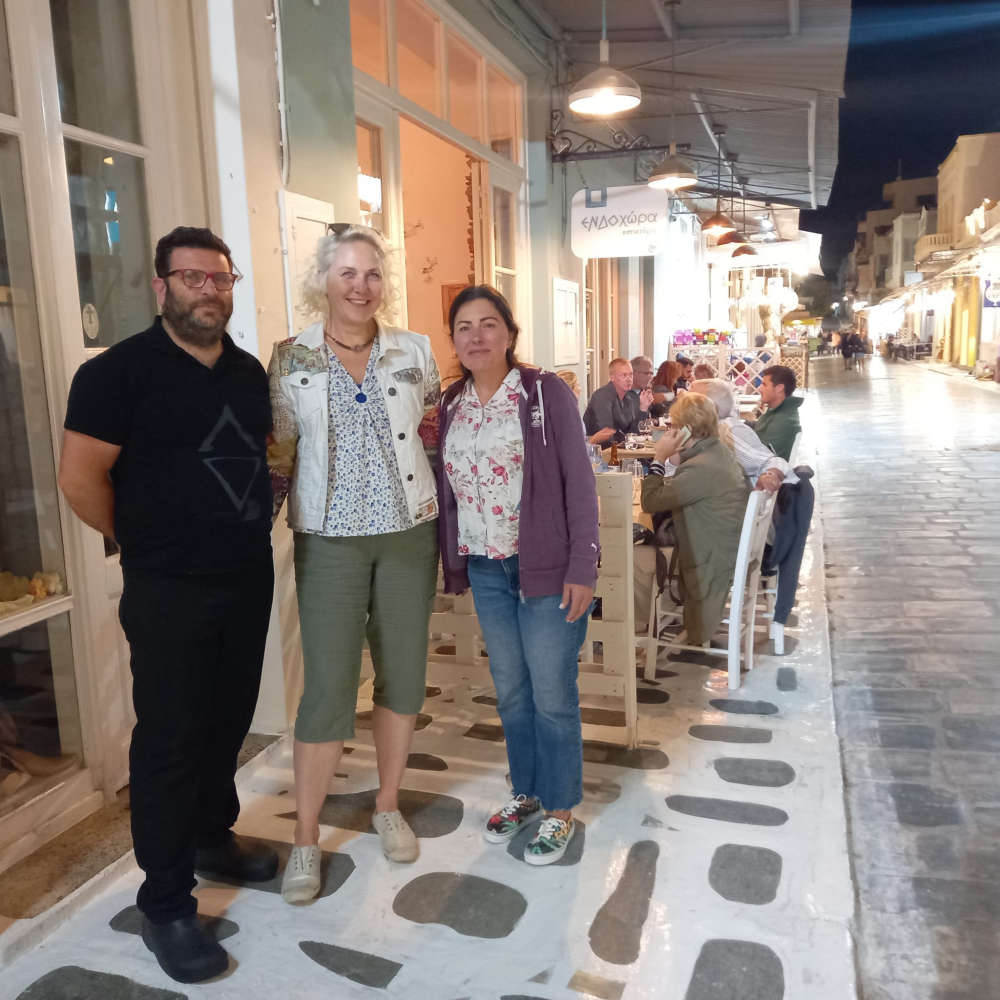
If you have a sweet tooth, then a stop at Zairis Patisserie, just outside Chora. Home made ice creams, almond biscuits that crunch on the outside and are soft and chewy inside, cakes and handmade chocolates, and delicious spoon sweets; these are basically very sweet treats, so sweet they are served as a single spoonful. Eat them on the spoon, or pour over ice cream. Delicious and bursting with flavour. The Patisserie’s owner, Evangelia, loves animals, spending her spare time helping to rescue and rehome the island’s stray dogs.
For a meal with a view, pop along to Batsi and have lunch at Stamatis Tavern overlooking the harbour. Here we had one of the best vegan meals of the trip; stuffed peppers, roasted potatoes and a salad full of colour and flavour.
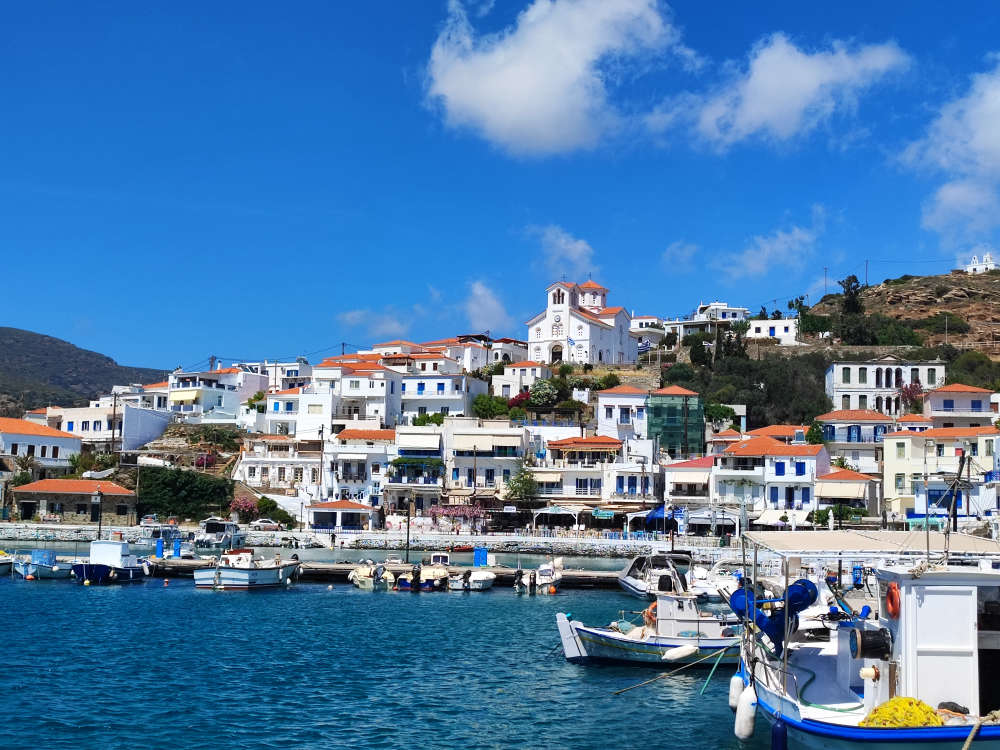
Andros has so much to offer; beautiful views, beaches, quaint cafes, history, hiking, picturesque villages and delicious foodie treats.
Although, of course, it is always possible just to tip up at a destination, hire a car and go exploring yourself, getting some expert help can make a real difference and ensure you understand the ‘what, why and how’ of the places you are seeing. We worked with Explore Andros which has an office in Chora. Our guides RG and Fotis both spoke excellent English and were full of interesting and useful information. They made sure we got to see the best of what Andros has to offer. And it really does have a lot.
FACT BOX Andros - www.andros.gr Andros - https://www.facebook.com/visitandrosisland Andros - https://www.instagram.com/visitandrosisland/ Andros - https://twitter.com/Visit_Andros Explore Andros - https://www.exploreandros.gr/ Zairis Patisserie - https://zairis-pastry.gr/en/ Endochora - https://www.instagram.com/endochora_andros/ Micra Anglia Boutique Hotel - https://micra-anglia.gr/ Andros Routes - www.androsroutes.gr
FEATURED
Gaydio Replay
-
 Chris Blackmore (21st January)
Chris Blackmore (21st January)getting you through the day
-
 Kriss Herbert (21st January)
Kriss Herbert (21st January)with Gaydio Anthems from 11am
-
 Gaydio Breakfast (21st January)
Gaydio Breakfast (21st January)Servin' big tunes, huge guests and guaranteed giggles





